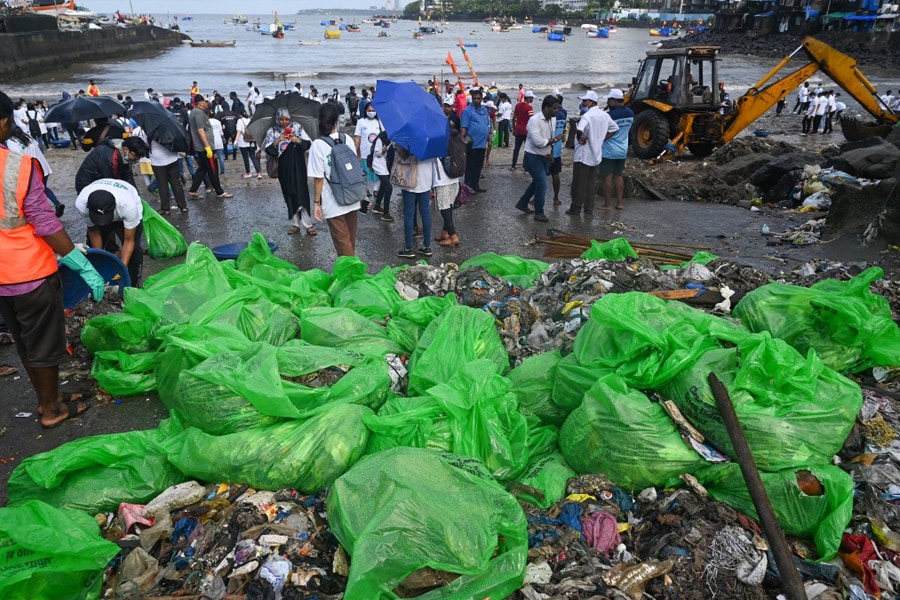
The ever-growing problem of plastic pollution in the oceans
While plastic is an intrinsic part of our life, we must curb its usage to reduce plastic waste. We also have to take responsibility for properly disposing of plastic waste if we want to keep our oceans pristine
 The Indian Government added its might to the plastic pollution mitigation effort by initiating the 75-day long “Swachh Sagar, Surakshit Sagar” initiative, under which 75 beaches nationwide were cleaned up. Image: Indranil Mukherjee / AFP
The Indian Government added its might to the plastic pollution mitigation effort by initiating the 75-day long “Swachh Sagar, Surakshit Sagar” initiative, under which 75 beaches nationwide were cleaned up. Image: Indranil Mukherjee / AFP
Having lived in Mumbai for a large part of our lives, we cannot but associate ourselves with the mood upliftment that the sights and smells of the ocean bring.
For the same reasons, some of our best family vacations have always been near the oceans, whether Maldives or Langkawi (in Malaysia) or, indeed, Goa or Kerala, in India. The oceans provide a certain sense of romanticism, do they not?
The great plastic problem
The oceans are, unfortunately, changing dramatically in recent times. And one of the causes is plastic pollution.The plastic debris in the sea has become a garbage patch in the north-central Pacific Ocean known as “The Great Pacific Garbage Patch”. Located between Hawaii and California, its size is estimated to exceed four times that of India’s largest state, Rajasthan. This non-biodegradable debris accumulated in the patch consists of many plastics that do not wear down but break into tiny pieces. Even though 80 percent of the plastic in the ocean comes from land-based sources, it was found in a National Geographic study in 2018 that synthetic fishing nets are the major contributors to the garbage patch in the Pacific.
Every year, thousands of fish, turtles, seabirds, and other marine mammals consume plastic without realising the consequences and die. These microplastics can also enter the food chain as small organisms ingest them, and then they are eaten by larger animals. It poses a risk to human health, as seafood is a major source of protein for many people around the world.
[This article has been reproduced with permission from SP Jain Institute of Management & Research, Mumbai. Views expressed by authors are personal.]







